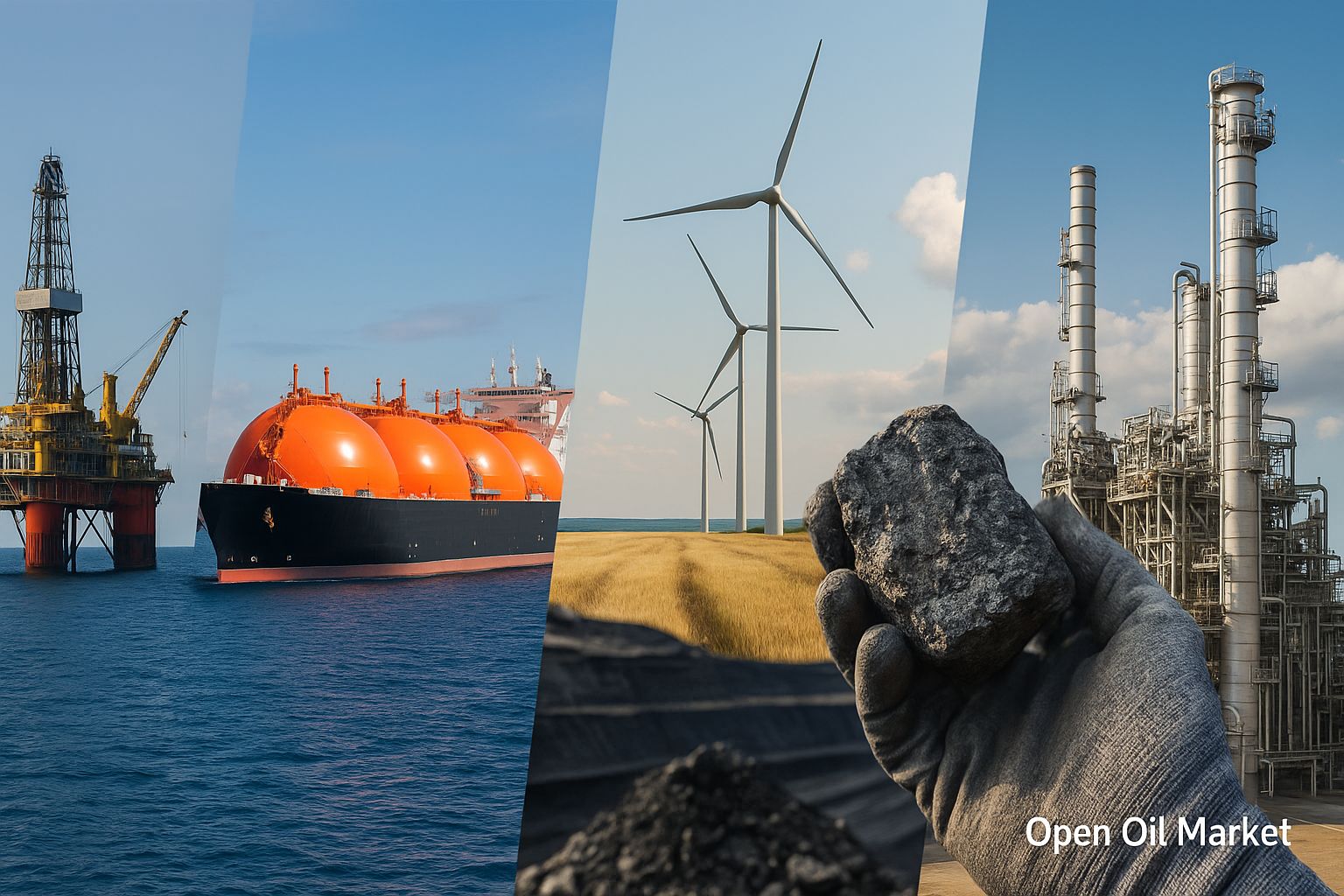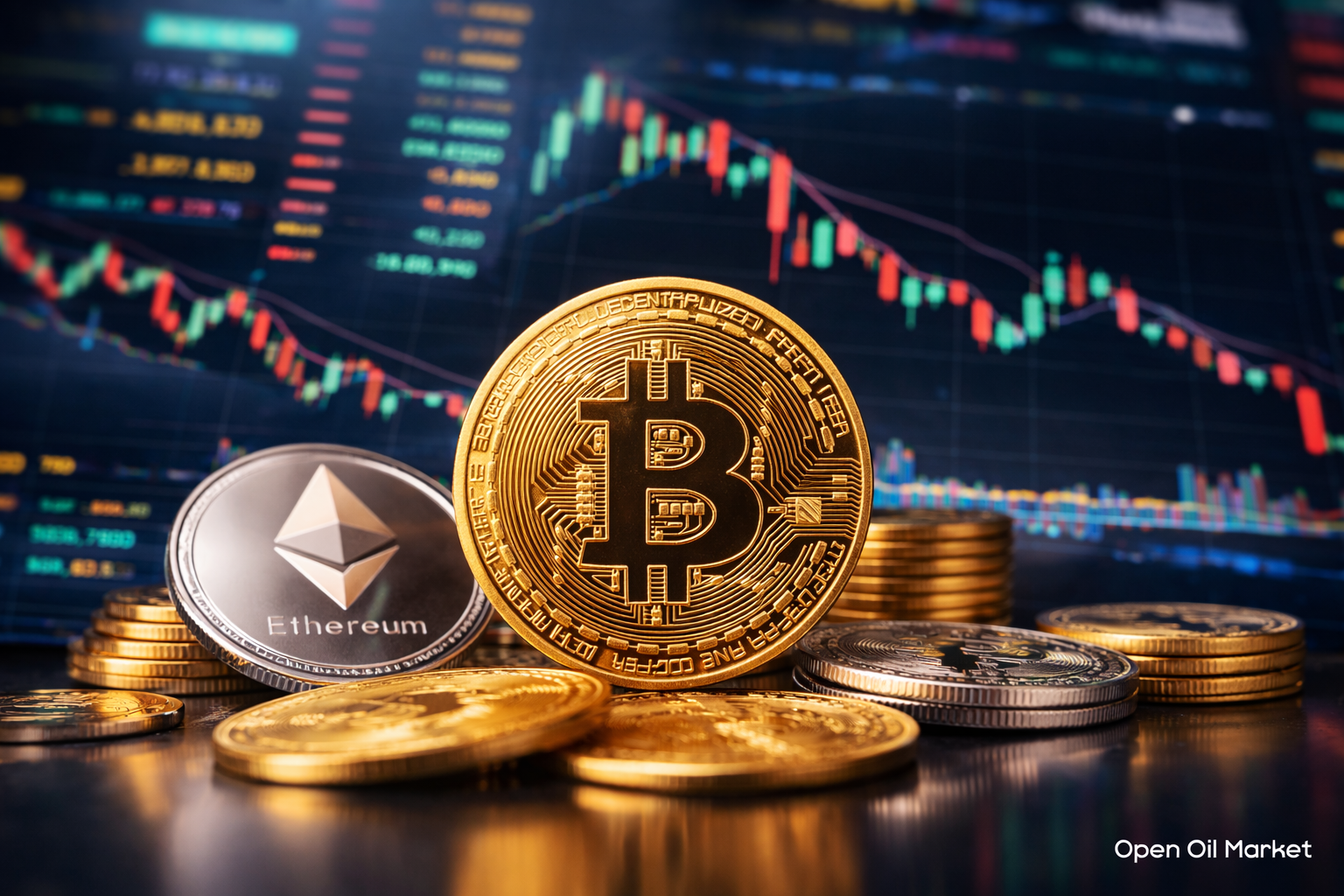
Global and Russian Fuel and Energy Sector News as of October 29, 2025: Intensification of Sanction Pressure, Redistribution of Oil Flows, Comfortable Gas Stocks for Winter, Investment Boom in Renewable Energy, and Stability of the Russian Fuel Market.
Current developments in the fuel and energy sector (FES) as of October 29, 2025, are unfolding against a backdrop of persistent geopolitical confrontation and moderately stable commodity market conditions, attracting the attention of investors and market participants. The sanction confrontation between Russia and the West shows no signs of weakening: this week, the U.S. imposed new sanctions on major Russian oil companies, further tightening restrictions on the Russian oil and gas sector. Major consumers are reconsidering their cooperation with Russia; India, for example, has announced its readiness to gradually reduce imports of Russian oil. Meanwhile, global oil and gas markets exhibit relatively calm dynamics: oil prices remain near multi-month lows due to an expected oversupply by the end of the year, while the gas market enters winter with comfortable stocks in storage, providing a favorable setting for consumers. The global energy transition is gaining momentum—investments in renewable energy are reaching record levels, although oil, gas, and coal still remain the backbone of global energy supply. In Russia, emergency measures to stabilize the domestic fuel market are already reducing shortages and lowering wholesale prices, although the situation in certain regions still requires attention. Below is a detailed overview of key news and trends in the oil and gas markets, as well as the situation in the domestic fuel market as of the current date.
Oil Market: New Sanctions, Redistribution of Exports, and Low Prices
Global oil prices remain at reduced levels, close to the lows of recent months. The Brent crude blend is trading around $60 per barrel, while the American WTI hovers around $57–59. After a brief rally in September, the market has reverted to a downward trend: participants are working under a scenario in which oil supply will exceed demand in Q4. Simultaneously, geopolitical tensions prevent prices from falling significantly below current levels. The situation is influenced by several factors:
- Oversupply and Slowing Demand. OPEC+ continues its planned production increases, while the U.S. and Brazil have achieved record levels of oil output. The pace of global demand growth has slowed: the forecast is about +0.7 million barrels per day in 2025 (compared to more than +2 million in 2023), leading to stock accumulation and putting pressure on prices.
- Sanction Pressure and Risks. New restrictions from the West create uncertainty in oil trade. The U.S. has effectively blocked cooperation with leading Russian oil companies, forcing buyers to restructure their supply chains for Russian crude. At the same time, drone attacks on oil infrastructure in Russia lead to temporary production halts. Any increase in sanctions or force majeure events at major fields could reduce supply and trigger price spikes.
Thus, the oil market is balancing between the pressures of fundamental factors and political risks. The oversupply keeps prices suppressed, yet sanctions shocks and shifts in trade prevent quotations from declining further. Market participants and oil companies are acting cautiously, accounting for the scenario of an oil surplus while also considering the possibility of new geopolitical shocks.
Natural Gas: Confident Start to Winter, Low Prices, and an Eastern Reorientation
The gas market situation is favorable for consumers. Europe enters the heating season with near-record fuel stockpiles: underground gas storage is over 90% full, creating a solid reserve for potential cold spells. A mild autumn and active summer gas injections have enabled the accumulation of necessary volumes without crises. Consequently, wholesale gas prices in the EU remain low: the TTF index has stabilized around €30-35 per MWh, significantly lower than the peaks of 2022. The risk of a repeat of last year's gas crisis has decreased substantially, although much will depend on winter weather conditions and uninterrupted LNG supplies.
- Europe is Prepared for Winter. EU storage facilities are over 90% full, ensuring a robust buffer even in the event of colder weather. Gas consumption remains moderate: the EU economy is growing slowly, and electricity generation from renewable sources was high in the autumn, reducing gas use at power plants.
- Record LNG Imports. European countries continue to increase purchases of liquefied natural gas. The weakening demand for LNG in Asia has freed up additional volumes for Europe. Suppliers from the U.S., Qatar, and other countries are maximizing export capacities to deliver fuel to the EU. The significant influx of LNG compensates for almost complete halts in pipeline supplies from Russia and covers reduced production in North Sea fields. LNG imports keep the market balanced and prevent sharp price fluctuations.
- Shift to the East. Having lost the European market, Russia is increasing gas exports to Asia. Volumes through the Power of Siberia pipeline to China reached record levels in 2025 (nearly 22 billion cubic meters per year). Moscow is also advancing the Power of Siberia 2 project through Mongolia to partially replace lost supplies to Europe by the end of the decade. Additionally, new liquefaction capacities on Yamal and Sakhalin have been launched—more LNG shipments are directed to China, India, and other Asian countries. Despite these steps, Russia's total gas exports remain below pre-sanction levels, as domestic supply and obligations to closest allies remain priorities.
Therefore, the global gas sector is entering winter in a relatively balanced state. Europe possesses an unprecedented safety cushion in terms of reserves, greatly reducing the likelihood of price shocks—although they cannot be completely ruled out. Meanwhile, the geography of global gas trade has radically changed: the EU has virtually turned away from Russian pipeline gas, and Russia has shifted its focus to Asian markets. Investors and market participants are closely monitoring the commissioning of new LNG capacities and infrastructural agreements, recognizing that the global gas landscape is continuing to change rapidly.
Russian Fuel Market: Stabilization and Price Control
By the autumn of 2025, the situation in the domestic market for petroleum products in Russia has noticeably stabilized following the late-summer crisis. In September, several regions experienced acute shortages of gasoline and diesel fuel due to spikes in seasonal demand and supply reductions from refineries (scheduled maintenance, accidents, and drone attacks). By mid-October, thanks to emergency government measures, the fuel shortage was significantly reduced. Wholesale prices for gasoline and diesel have fallen from their record peaks, and independent gas stations have resumed normal operations. Nevertheless, to prevent a new wave of the fuel crisis, the government has extended and expanded several measures:
- Export Restrictions. The complete ban on gasoline exports has been extended until December 31, 2025. Restrictions on diesel fuel exports remain in place until the end of the year: independent traders are prohibited from exporting diesel, while oil companies with refineries are allowed only limited exports under state control.
- Support for Refineries. Authorities have maintained payments to refineries, compensating for the difference between export and domestic fuel prices to stimulate supplies to domestic gas stations. Oil companies are also urged to postpone non-critical maintenance and increase processing to boost gasoline and diesel production by winter.
- Imports and Prices. To eliminate shortages, fuel imports have been eased: import duties on gasoline and diesel have been zeroed until mid-2026, allowing for the potential attraction of resources from abroad if needed. Concurrently, price monitoring has been intensified— the Federal Antimonopoly Service has issued warnings to major fuel networks for attempts at unjustified price increases. The government avoids direct price freezes, relying on market mechanisms (damping, transportation subsidies, curbing speculation).
The complex of measures already produces results. By the end of October, gasoline and diesel production in Russia has returned to normal levels—this has been aided by the completion of unscheduled repairs at refineries and the redirection of some export volumes to the domestic market. Gas stations in most regions are again well stocked with fuel. The government aims to navigate through the winter without significant supply disruptions, although specific challenges in remote areas cannot be discounted. Ensuring the domestic market remains a priority: export restrictions will only be eased after the country is fully saturated with fuel and necessary reserves are formed. Even amidst external pressure and price volatility, domestic fuel supply will remain stable, successfully averting a new crisis.




